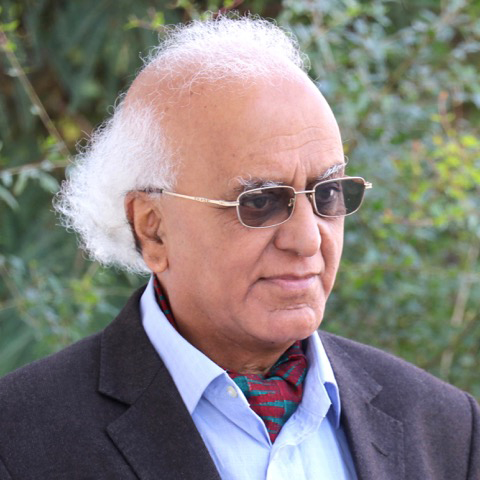Columns
A long way to go
Nepali cinema is grappling with the fundamental questions of experiments marketing of cinema.
Abhi Subedi
Neer Sha, the veteran Nepali cinema icon, has made some crucial interventions in the ongoing discourse about the identity and the entire oeuvre of Nepali cinema. What Shah said at a conference about Nepali cinema in the capital last month deserves attention for several reasons. First, in his long career spanning 55 years in all aspects of Nepali film production, he has participated in the crucial modes of the historicity of this very important, and in his words, not a very thriving industry. Secondly, he is firmly in favour of opening academic discussions about Nepali cinema starting with the first Nepali film (DB Pariyar's ‘Satya Harischandra’ released some 70 years ago in September 1951). The moral is that this industry is old, but it has not made any avant-gardist breakthroughs, nor has it established a comfortable standard culture of making cinemas for the evolving Nepali audience regularly. Instead, as we understand from the intervention of this esteemed Nepali cinema veteran and insider, the history of Nepali cinema is a history of jolts, claims and counterclaims.
The genesis of Nepali cinema speaks volumes. One, as Shah says, is the question of originality of the text and drama. He recalls how Debu Sen of then Bombay was made to write the screenplay for the film ‘Manko Bandh’, whose authorship in Nepali translation was owned by a member of the Nepali Chalachitra Sansthan. The bitterest confession of Shah can be found in these words, ‘It seems, I have wasted my life, but today's energetic and vibrant youths engaged in this industry should not waste theirs.’ The other point Shah makes is that Nepali cinema makers were not aware of the works of Nepali literary writers who had established a robust literary tradition starting with Bhanu Bhakta Acharya whose Ramayana, he appears to believe, could have been used for a cinema.
Shah's speech coincides with the screening of Kabbadi—a blockbuster movie whose recent sequel just came out. Pushkar Gurung, my long-time theatre associate, claimed that this was the most significant commercial success achieved by a film in a day. Kabadi and its sequels attracted me because a large ensemble of its cast consisted of actors who previously worked in the theatre. The director, Ram Babu Gurung's techniques, align with the styles and theatrical openness of the artists who have been working with him. The strength of Kabbadi Kabbadi Kabbadi is its theatrical effect—simplicity, shifts of screenplay moments without jerks, its entire reliance on the native, or indigenous ethos and the non-Bollywoodian acting of the artists, which deconstructs a set pattern that Neer Shah has criticised as the non-productive and unoriginal exercise. ‘Jatrai Jatra’ (2019) written and directed by Rhythm Paudel, similarly is a comedy-drama played by theatre artists. The theatre artists' flexibility with some of the latest techniques of films should be seen as the moments of shifts in Nepali films.
I do not want to advocate Nepali films made so far have no role in carving out a history of film production involving good stories and screenplays, as well as directors and actors. Ashis Nandy, a scholar of India in his introduction to the famous book about Indian film The Secret Politics of Our Desires: Innocence, Culpability and Popular Cinema (1998) says Bombay cinema is made for all, and it is everybody's subject. And that is what I am trying to say as well. Nandy adds, in the context of modernism, the Indians have made their caricatures, their self-acting in Indian films. Cinema is the reflection of what the middle-class Indians would want to have for themselves and India. But Nandy also sees the production of shaking fantasies in what he calls Bombay cinema. But Nandy ‘laments the loss of its multicultural ethos, erosion of its self-reflexivity and decline of its literary content.’
The irony is that the Nepali film production and consumption suffer from that very elision. Ironically, Nepali audience and film producers want to see their caricature through the Indian caricatures of the Indian middle class. As a result, the Nepali film producers and directors, as Shah complains, did reflect neither on the natural desire of the Nepali middle class, which has remained the primary consumer nor on the shaking fantasies. Nepali filmmakers and producers have learnt to live with these tacitly sanctioned exotic caricatures. One way out for that was that they would seek the Nepali national models in the Hindi film. And nobody but the Nepalis who were engaged in this field, as well as those who never discussed this subject seriously, are responsible for that.
The question of scholarship on cinema everywhere is a subject of discussion. The question of reference dominates our own conversations. From the very beginning, because of the non-existence of the filmmaking techniques, expertise and talents, we have used the Bombay film for reference. We referred to the Hindi films even to evoke the Nepali sense and to seek the creative domains. We produced some mimicry and some original works, no doubt. But the Nepali cinema despite many efforts is grappling with the fundamental questions of experiments and marketing of cinema.
Nepali film should overcome the psyche of working as peripheral art. The best way to overcome that psyche is first and foremost, the proper education of those who are involved or would like to engage in cinema making and production. Secondly, the exploration of a multitude of diverse cultures, folklores, historical or political realities, myths and mythopoetic traditions is significant. Good indications and trends have strongly begun to appear in new cinemas, and this must continue.
***
What do you think?
Dear reader, we’d like to hear from you. We regularly publish letters to the editor on contemporary issues or direct responses to something the Post has recently published. Please send your letters to [email protected] with "Letter to the Editor" in the subject line. Please include your name, location, and a contact address so one of our editors can reach out to you.




 15.12°C Kathmandu
15.12°C Kathmandu















